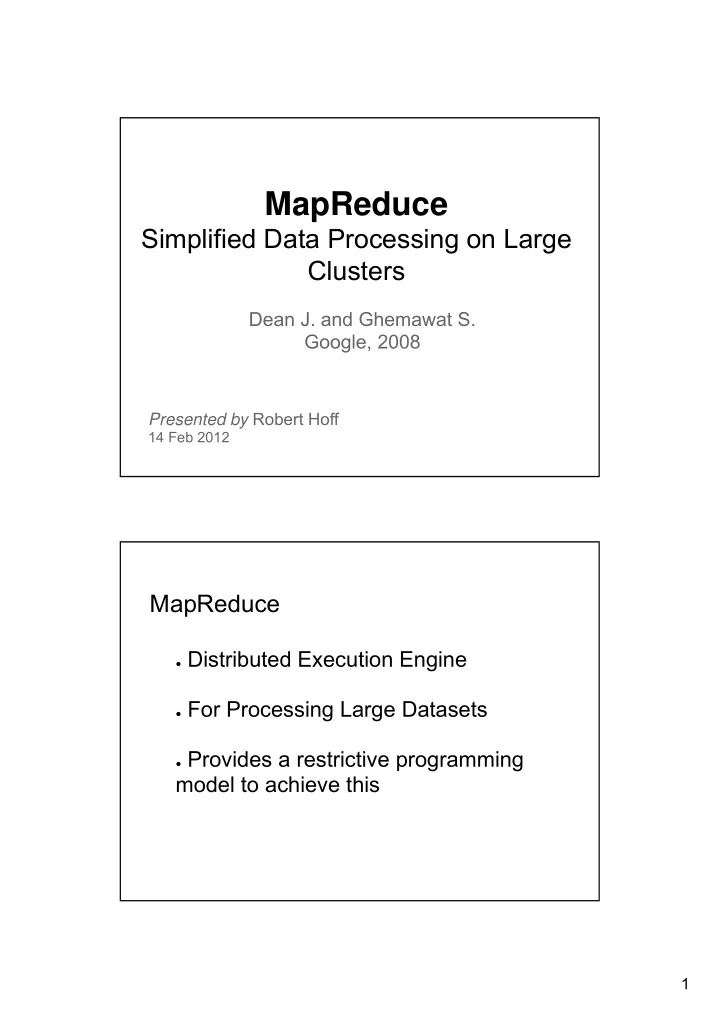

MapReduce Simplified Data Processing on Large Clusters Dean J. and Ghemawat S. Google, 2008 Presented by Robert Hoff 14 Feb 2012 MapReduce ● Distributed Execution Engine ● For Processing Large Datasets ● Provides a restrictive programming model to achieve this 1
By Originated in 2003 to Solve search related problems ● Inverted Indices (Pagerank) ● Word Count ● Most Frequent Queries Previously at Google ● Issues of parallisation, fault-tolerance, load-balancing were specific for each problem ● Using ideas from functional programming, map and reduce don't have side effects and can be parallised ● This method turned out to be applicable to most of their computational requirements 2
Related Work ● There existed systems that provided restricted programming models, and used these to parallise the computations. MapReduce main contributions at the time ● Fault Tolerance (running on top of commodity HW) ● Higher-Level of abstraction Can consider separately: Programming Interface Execution Engine (The Implemenation) 3
map (k1,v1) -> list(k2,v2) reduce (k2, list(v2)) -> list(v3) Map and reduce are client supplied functions ( may be anything ). These are applied to an input set that can be broken into n number of (k1, v1) pieces map (k1,v1) → list(k2,v2) 4
reduce (k2, list(v2)) -> list(v3) Word Count Example Map must finish before reduce starts 5
Twitter Hashtag Count Implementation ● Single Master ● Assigns Workers ● Fault Tolerant (includes failed and lagging workers) 6
Performance – Grep ● Searches for a 10^10 100 byte records for a three character pattern ● 10^12 bytes = 1,000,000 MB = 15,000 x 64MB chunks ● 1800 Worker Machines Experience MapReduce Applied to an increasing number of useful Problems ● Machine learning (e.g. statistical translation) ● Clustering for Google News ● Graph Computations (social network data) 7
Further / Future Work Since MapReduce programming model is restrictive and can only be applied to limited set of problems. Research is ongoing on execution engines that have higher generality ● DryadLINQ ● CIEL Further / Future Work The ideas of MapReduce, or any other Distributed Execution Engine may be applied to many-core architectures. For example Open-Source version Phoenix (from Stanford). Automatically manages thread creation, dynamic task scheduling, data partitioning, and fault tolerance across processor nodes. 8
The paper - Remarks ● MapReduce solves Google's problems well. ● Results and ideas are highly replicable. ● But, somewhat disassociated from other research, lacks comparisons to other work (solves Google's problems well enough so why bother?) Conclusion ● MapReduce is still in use by Google today, solving a growing number of problems. ● MapReduce has become the ● leading programming model of choice for processing large data sets ● Open-Source versions (e.g. Hadoop) are employed by many other organisations 9
Recommend
More recommend